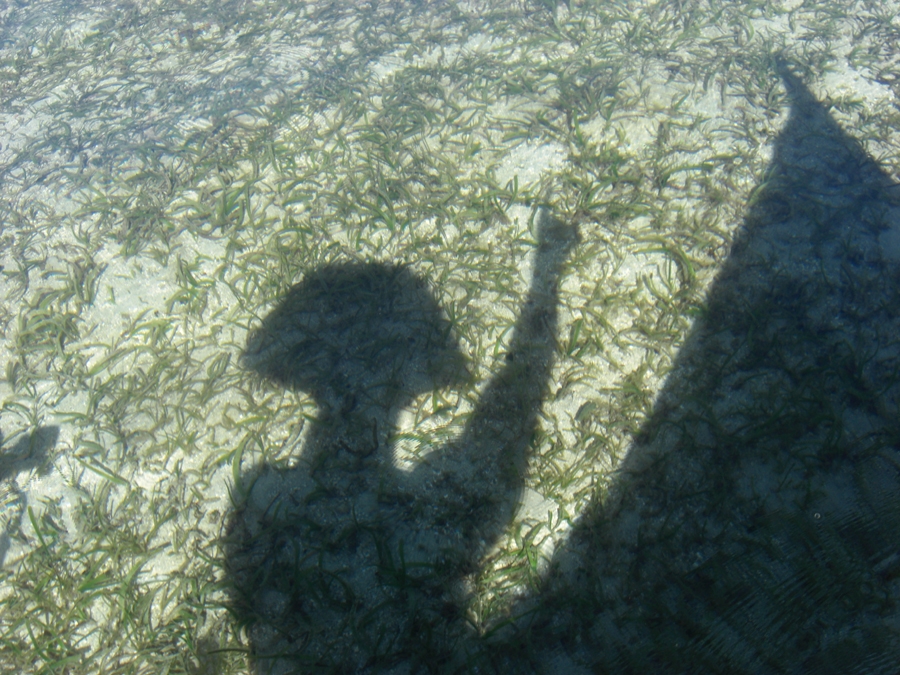The artist as pirate – not lame-ass ‘appropriator’ but genuine shiver-me-timbers lawless adventurer – this is the subject of Et in Libertalia Ego. The title nods to Nicolas Poussin’s Arcadian Shepherds (1637–8) but the ego in utopia here is not death, it is art – which the show abounds with (four giant rooms of videos, sculptures, paintings, photos and installations) – by more than a dozen artists including Pierre Huyghe, Thomas Hirschhorn, Damián Ortega, Mike Nelson, Grégory and Cyril Chapuisat and Francis Alÿs. The show’s core, however, doesn’t hang on a wall or sit on the floor; it is the picaresque adventures of the French conceptual artist that conceived, commissioned, curated and/or cocreated every work in it. In June 2008, Mathieu Briand swam from a small island next to Madagascar to an even smaller island off its coast. His quest: a safe haven for contemporary art, far from the ken and the cry of the market, where he and others – artists, dancers and writers – could make, show and discuss art for the pure sake of making, showing and discussing art.
An artist’s utopia, then: not a boring, institutionally compromised artist’s colony or residency, but a true ‘Libertalia’, modelled on the fabled eighteenth-century pirate paradise of that name, also off the coast of Madagascar
An artist’s utopia, then: not a boring, institutionally compromised artist’s colony or residency, but a true ‘Libertalia’, modelled on the fabled eighteenth-century pirate paradise of that name, also off the coast of Madagascar, described in the General History of the Robberies and Murders of the Most Notorious Pyrates (1724), by Captain Charles Johnson. Some believe Daniel Defoe the true author of the Johnson book, and there is indeed a bit of his Robinson Crusoe in Briand’s yarn (the accompanying artist book is a real page-turner, replete with machine guns, a coup d’état and Western tourists burnt alive on a beach). Briand, however, is a Crusoe in reverse, intentionally marooned, free to do what he pleases. His Libertalia, with its parallels to Paul Gauguin’s Tahiti, resonates with absurdities and contradictions, and itself describes, metonymically, another reversal (or is it a loop?), that of conceptual art production itself: he starts with a photograph of the island sent in an email by his sister – their aunt lives on the island facing it – which evolves into a point in mental space, barely a dot on a map, and then, once he lands on its shore, exhausted, having misjudged the distance and the tides, a physical reality.
And it is here, in the manifest physical that the tale becomes infinitely richer, and more magical. For, like Crusoe, Briand soon discovers he is not alone on the island; it is home to a Malagasy family, whose patriarch, Papa, is guardian of the family’s animist, Christian and Muslim rituals, which include animal sacrifice and the worship of a sacred tree. Colonialism and exoticism now colour every surface: Briand’s tricorn hat, which he wears in the video component of this show, denotes Bonaparte as much as buccaneer, and the points of reference switch from Johnson/Defoe to Jean Rouch’s ethnographic documentary The Mad Masters (1955) and Ren. Girard’s anthropo-philosophical theories of the sacred, sacrifice, scapegoating and mimetic desire. Briand dons ‘native’ garb, pours libations, consults with a medium, eats sacrificial oxen and so on. To help the desperately poor family, he rents land from them and builds an artist’s studio, which they can use as a bed-and-breakfast in his absence. The Gauguin-like dream devolves into ecotourism. Years pass, artists come and create things that puzzle the family – why all this energy and money to produce such useless things? Nature and time swallow some works. Papa’s son, Saïd, convinced the art possesses black magic powers – why else make it? – destroys others. Doing so makes the separation of profane and sacred slip a bit. Can art, even highbrow conceptual art, become magical again? Can it be ripped loose from its traditional economic contexts of production and circulation and pirated into new ones? That this Paris show exists suggests no, of course not; or not entirely. But that Briand tirelessly pursues the dream – dares even dream it – conscious of its registers and ironies, and relishing in its complexity, is laudatory. If I wore a tricorn, I would lift it now with a flourish, shout “Yo-ho-ho!” and bow.
This article was first published in the April 2015 issue.
